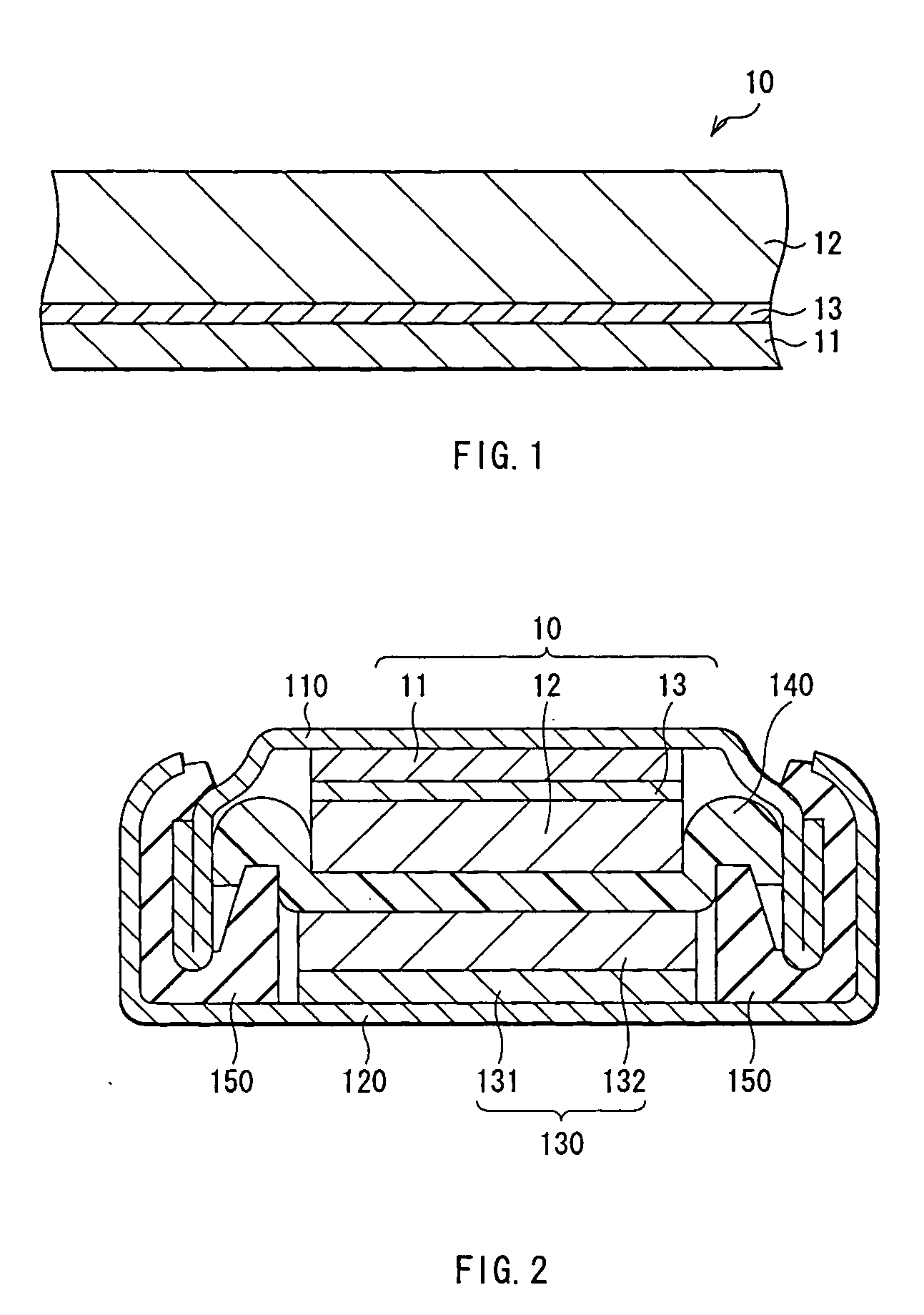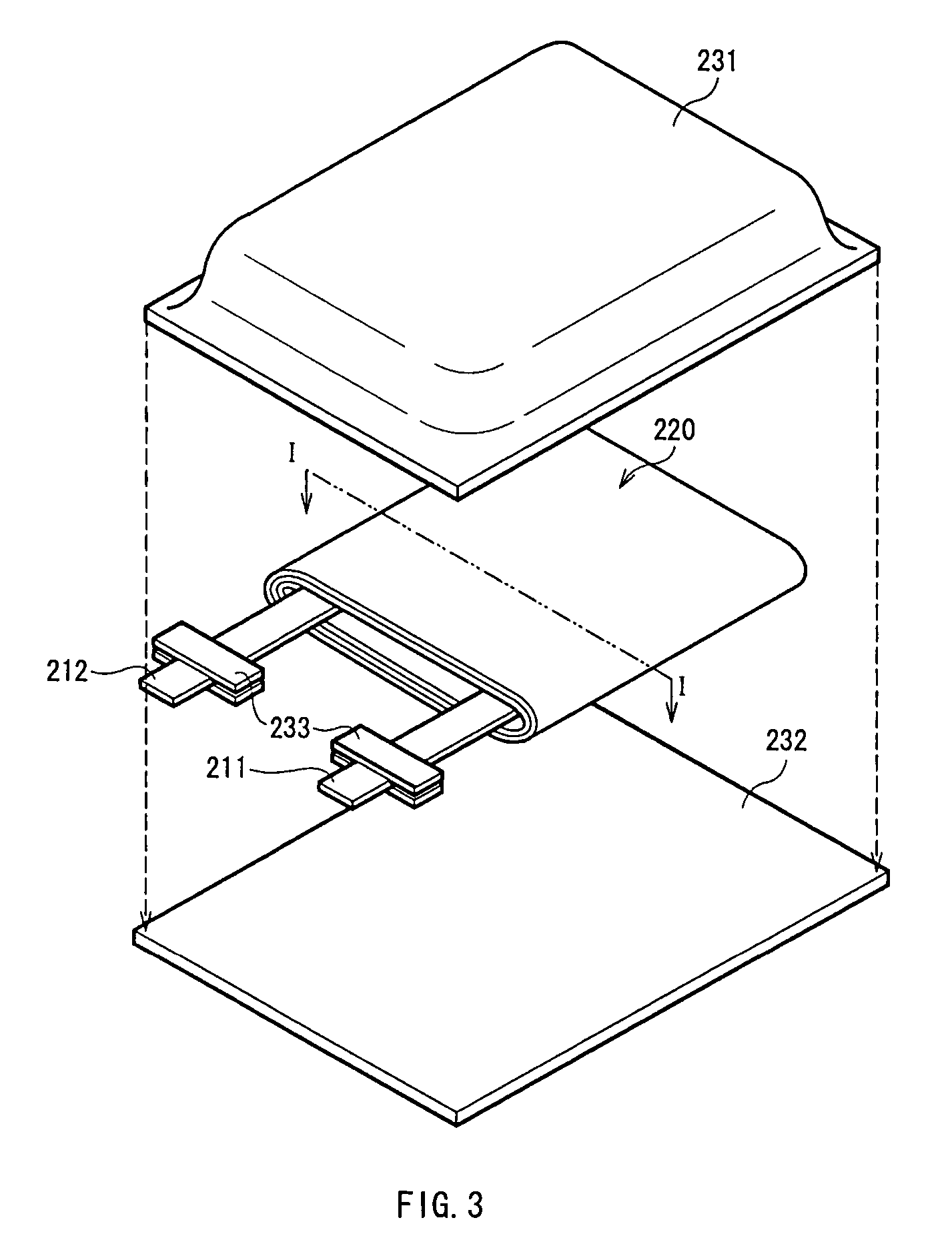Anode and battery
- Summary
- Abstract
- Description
- Claims
- Application Information
AI Technical Summary
Benefits of technology
Problems solved by technology
Method used
Image
Examples
first embodiment
[0049]FIG. 1 shows a simplified construction of an anode 10 according to a first embodiment of the invention. The anode 10 of this embodiment has, for example, an anode current collector 11, an anode active material layer 12 provided for the anode current collector 11, and an interlayer 13 provided between the anode current collector 11 and the anode active material layer 12. The anode active material layer 12 and the interlayer 13 can be formed on both sides or a single side of the anode current collector 11.
[0050] The anode current collector 11 is preferably made of a metal material having high conductivity. In particular, the anode current collector 11 is preferably made of a metal material containing at least one of metal elements which do not form an intermetallic compound with lithium. When the intermetallic compound is formed with lithium, expansion and shrinkage arise associated with charge and discharge, structural destruction arises, and current collecting characteristics...
second embodiment
[0094]FIG. 5 shows a simplified construction of an anode 20 according to a second embodiment of the invention. The anode 20 has, for example, an anode current collector 21 and an anode active material layer 22 provided on the anode current collector 21. The anode active material layer 22 can be formed on both sides or a single side of the anode current collector 21.
[0095] The anode current collector 21 contains a material having superelasticity or shape-memory effect, such as an alloy at least as a part of the anode current collector 21. When such material is contained, even if the anode active material layer 22 is expanded or shrunk associated with charge and discharge, its stress can be relaxed and separation of the anode active material layer 22 can be inhibited. Definitions of the superelasticity and the shape-memory effect are as described in the first embodiment.
[0096] Further, as a material having superelasticity or shape-memory effect, a material which does not form an int...
third embodiment
[0110]FIG. 8 shows a simplified construction of an anode 30 according to a third embodiment of the invention. The anode 30 has, for example, an anode current collector 31, an anode active material layer 32 provided on the anode current collector 31, and a thin film layer 34 provided on the anode active material layer 32. The anode current collector 31, the anode active material layer 32, and the thin film layer 33 are layered in this order. The anode active material layer 32 and the thin film layer 33 can be formed on both sides or a single side of the anode current collector 31.
[0111] The anode current collector 31 is preferably made of a metal material containing at least one of metal elements which do not form an intermetallic compound with lithium. When the intermetallic compound is formed with lithium, expansion and shrinkage arise associated with charge and discharge, structural destruction arises, and current collecting characteristics become lowered. In addition, an ability...
PUM
| Property | Measurement | Unit |
|---|---|---|
| Surface roughness | aaaaa | aaaaa |
| Ratio | aaaaa | aaaaa |
| Memory effect | aaaaa | aaaaa |
Abstract
Description
Claims
Application Information
 Login to View More
Login to View More - R&D
- Intellectual Property
- Life Sciences
- Materials
- Tech Scout
- Unparalleled Data Quality
- Higher Quality Content
- 60% Fewer Hallucinations
Browse by: Latest US Patents, China's latest patents, Technical Efficacy Thesaurus, Application Domain, Technology Topic, Popular Technical Reports.
© 2025 PatSnap. All rights reserved.Legal|Privacy policy|Modern Slavery Act Transparency Statement|Sitemap|About US| Contact US: help@patsnap.com



